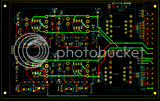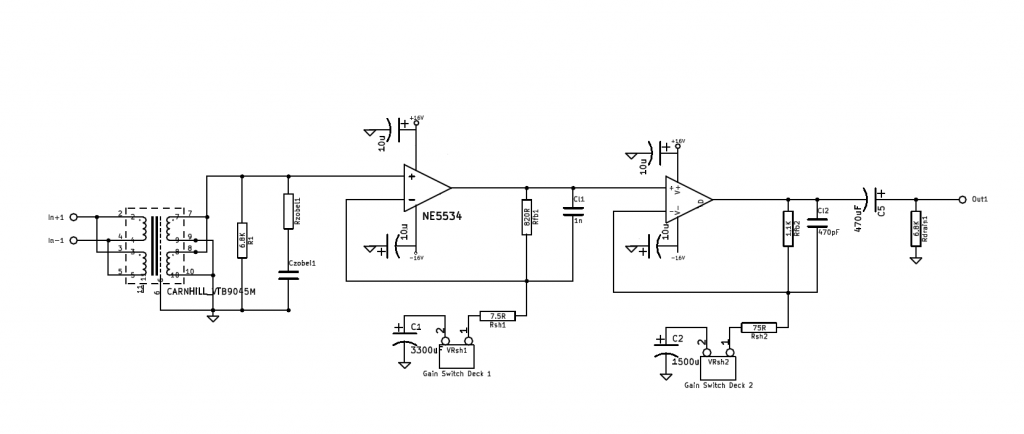ramshackles
Well-known member
I've laid out a PCB which is essentially 4 seperate amplifiers and 2 transformers. Each 'block' is unconnected, following this schematic:

The PCB layout:

So, I've used the PCB to wire up a preamp according to the schematic attached (as a pdf). Im quite certain it is wired up correctly, although I neglected the decoupling capacitors on this first test. When I pass power through with no opamps in place, all the voltages look good and, yay, no smoke!
Then I popped in the 5534's and no! the second opamp starts smoking...
Any tips on how to troubleshoot? Im at a loss...

The PCB layout:

So, I've used the PCB to wire up a preamp according to the schematic attached (as a pdf). Im quite certain it is wired up correctly, although I neglected the decoupling capacitors on this first test. When I pass power through with no opamps in place, all the voltages look good and, yay, no smoke!
Then I popped in the 5534's and no! the second opamp starts smoking...
Any tips on how to troubleshoot? Im at a loss...



































